|
|

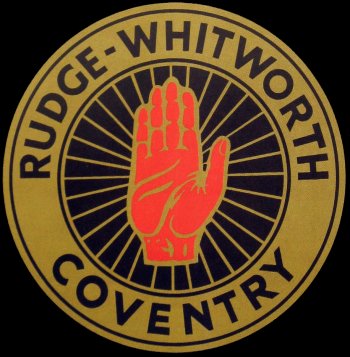
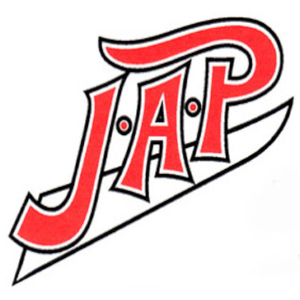


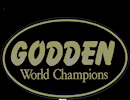

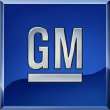
|
|
| |
| |
The Tony Webb
Photographic Collection |
| |
| Tony is a much respected Australian speedway historian, Author and
collector. He has decided to share some of his photographic
collection with us on this page. Thank you very much Tony. |
| |
| John says: I am really pleased that
my website gets hits from all around the world and you cannot get
further away than Australia |
| |
| |
|
| |
| |
|
Toowoomba
|
| |
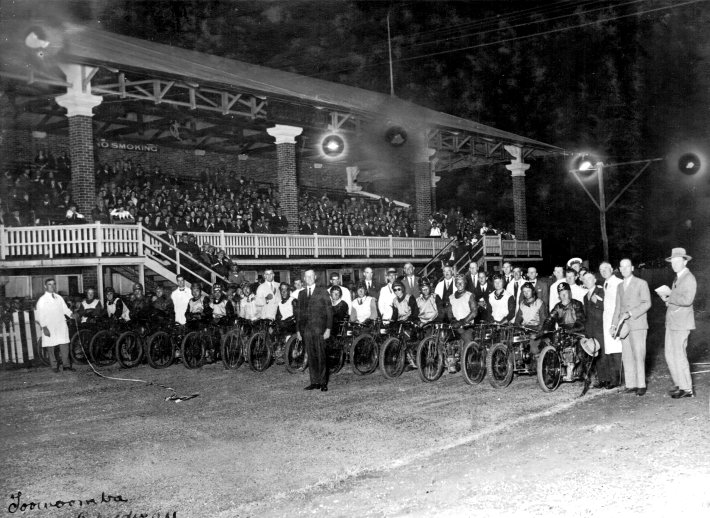 |
| |
|
Toowoomba Speedway 1927
|
| |
| Toowoomba (nicknamed 'The Garden City') is a city in Southern
Queensland, Australia. It is located 127 km (79 mi) west of Queensland's
capital city, Brisbane. With an estimated district population of 131,258,
Toowoomba is Australia's second most populous inland city and the most
populous non-capital inland city. |
| |
| An University and Cathedral City, Toowoomba hosts the Australian
Carnival of Flowers each September, and Easterfest is held annually over
the Easter weekend. There are more than 150 public parks and gardens in
Toowoomba. It has developed into a regional centre for business and
government services. |
| |
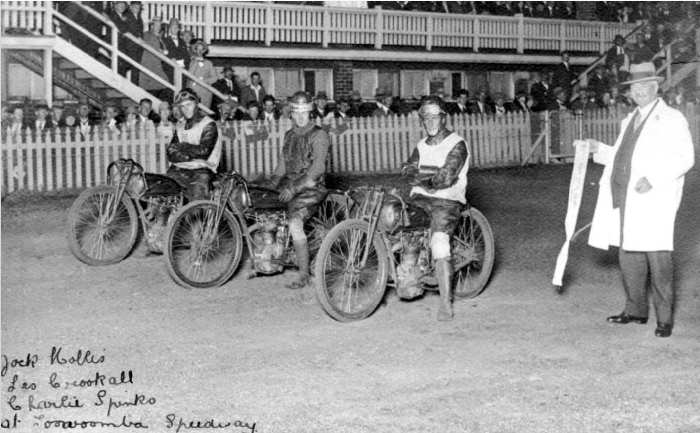 |
| |
| Toowoomba Speedway 1927 Jack
Hollis, Les Crookall and Charlie Spinks. The guys are
mounted on identical Harley Davidson Peashooters. These
bikes were best up to 1928 when
British bike the Douglas DT came along. |
| |
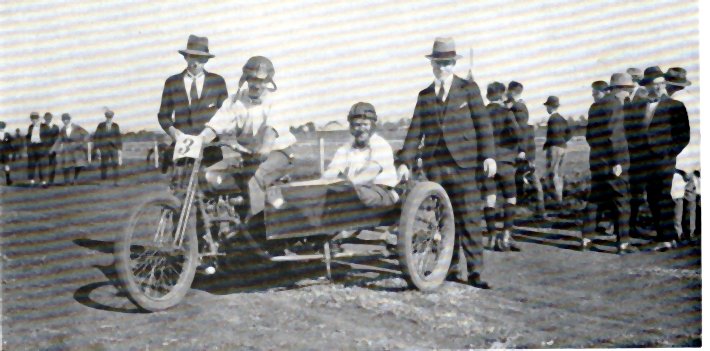 |
| |
|
Toowoomba Sidecar 1927
|
| |
| |
Barry Forsyth's
1927 Newspaper Scans |
| |
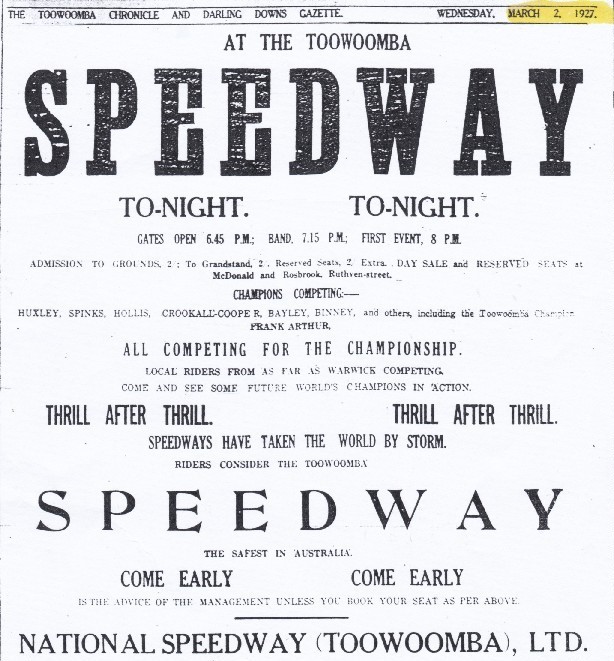 |
|
Courtesy of Barry Forsyth |
| |
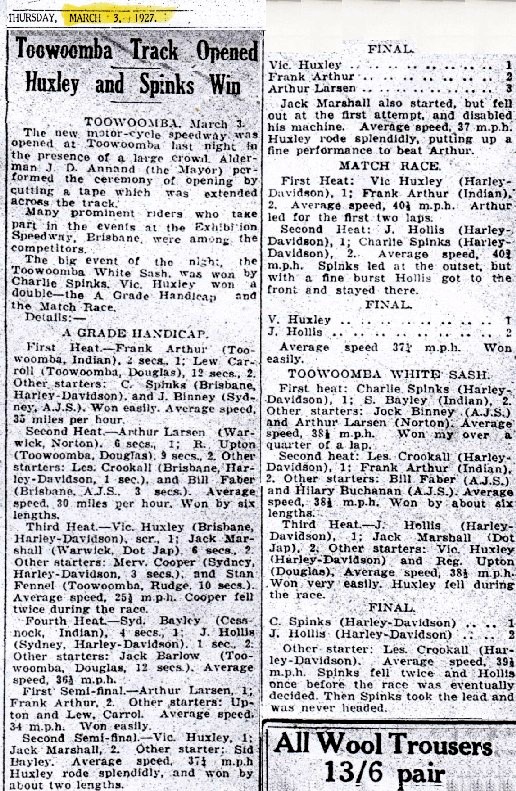 |
|
Courtesy of Barry Forsyth |
| |
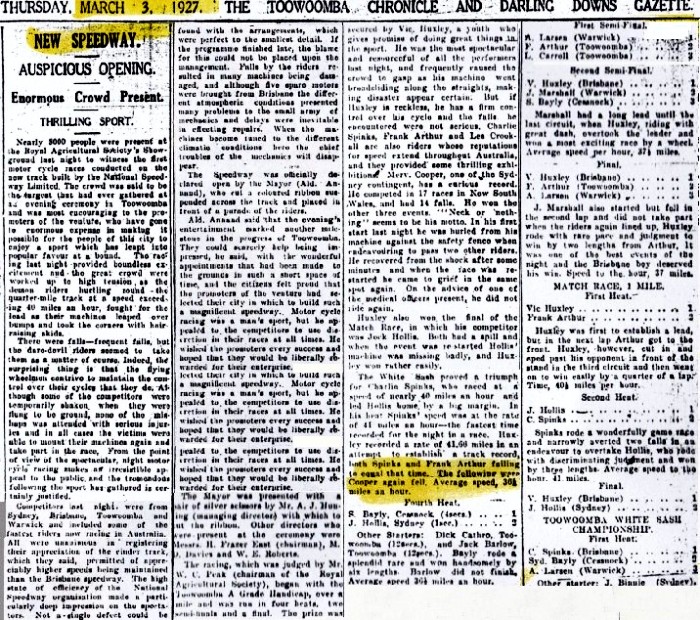 |
|
Courtesy of Barry Forsyth |
| |
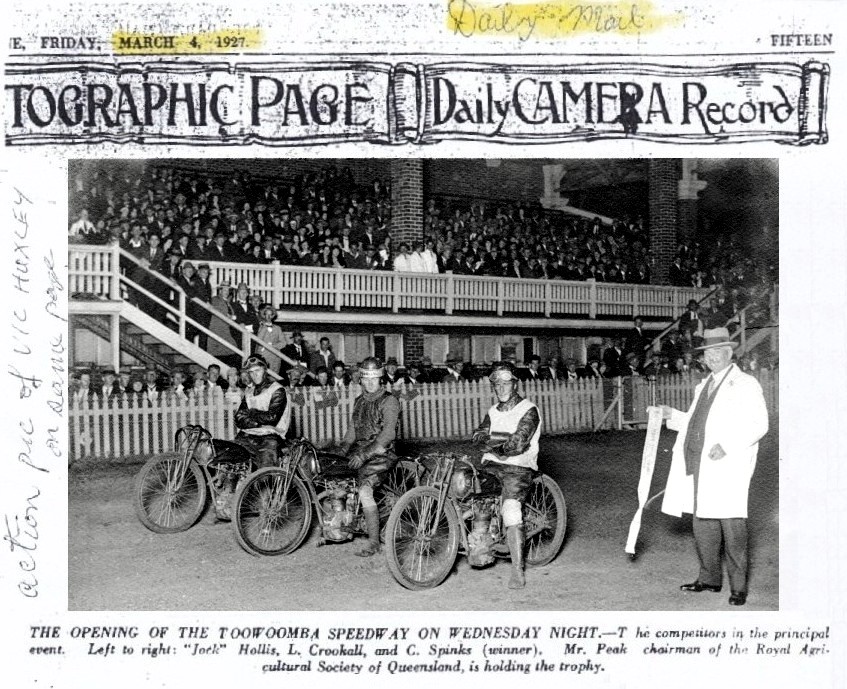 |
|
Courtesy of Barry Forsyth |
| |
| John says: My thanks To Steve Magro and Barry
for these 4 Newspaper scans of Toowoomba's opening in1927.
Try as I might, I have been unable to see the "chairman Mr Peak
holding the trophy!" Just the guy in the white coat but he
appears to be holding a toilet roll not a trophy! |
|
|
| |
|
| |
| |
| Coorparoo
Brisbane |
| |
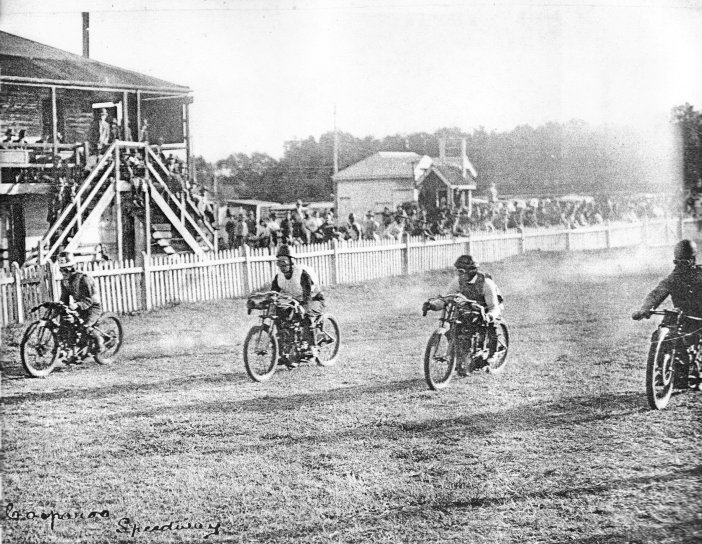 |
| |
|
Coorparoo is a southern suburb of Brisbane,
Queensland, Australia, located approximately four kilometres from
the city. I wonder how early this photo is?
Tony Webb says: Coorparoo Racecourse was a grasstrack/speedway
that was organised by a riders co-operative. it ran from may
1927 to July 1927 between the closure of the Ekka and the
opening of Davies park. Almost all of the top riders of the
time raced there, Spencer Stratton, Lionel Van Praag, Jock
Hollis, Frank Pearce, Dicky Smith, Arthur Yenson etc.
|
| |
| Evan Findlay's Aerial Photograph Of
Coorparoo |
| |
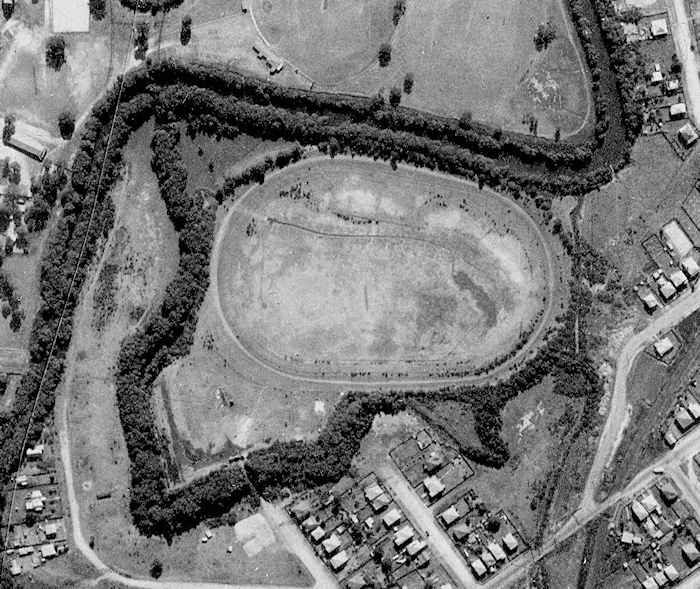 |
| Courtesy of Evan Findlay |
| |
|
Evan Findlay says: Gday John, My name is Evan Findlay and I
have been researching the history of the Coorparoo Football
Club in Queensland, Australia, for the past five years.
Through my research, I have discovered that the football ovals
were initially a racecourse for horse racing, before a Royal
Commission into unregistered racing shut the course down.
After that they allowed bike racing for approximately 6
months.
I would like to use the image, supplied by Tony Webb, of the
Coorparoo Speedway in my upcoming book. I have photo’s of the
area as a refuse tip in 1949, I have an aerial photo, which I
have attached to this email, taken by an American Bomber plane
in 1946. What I don’t have is a photo of the speedway.
I have been unable to track down Tony Webb to ask him for
permission to use the image. I was hoping you may have some
contact details you could pass on to me. I have tried his
email address
binbooks@iinet.au, with no luck. Hoping you can assist me
in this matter. Cheers Evan. |
| John says: Thank you for the aerial photo
Evan, I am sending you an alternative email address for Tony by
email. |
|
|
| |
|
| |
| |
| Lionel Van Praag |
| |
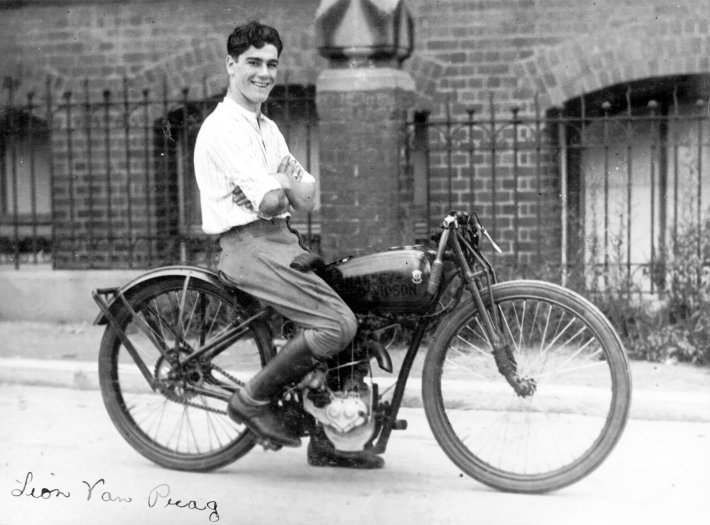 |
| This is Lionel Van Praag aboard a
Harley Davidson Peashooter: 1927 |
| |
| |
|
| |
| |
1927 Jack Hollis, Lionel Van Praag, Frank
Pearce
& Charlie Spinks |
| |
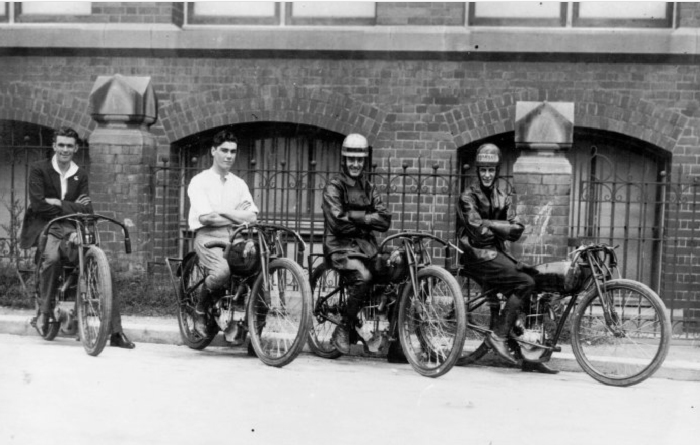 |
| |
| Jack Hollis, Lionel Van Praag, Frank
Pearce and Charlie Spinks: 1927. Lionel is wearing the same gear
as the photo above this one so I presume the photos were taken on
the same day in 1927. All 4 riders appear to be on Harley
Davidsons |
| |
| |
|
| |
| |
| Moore Park |
| |
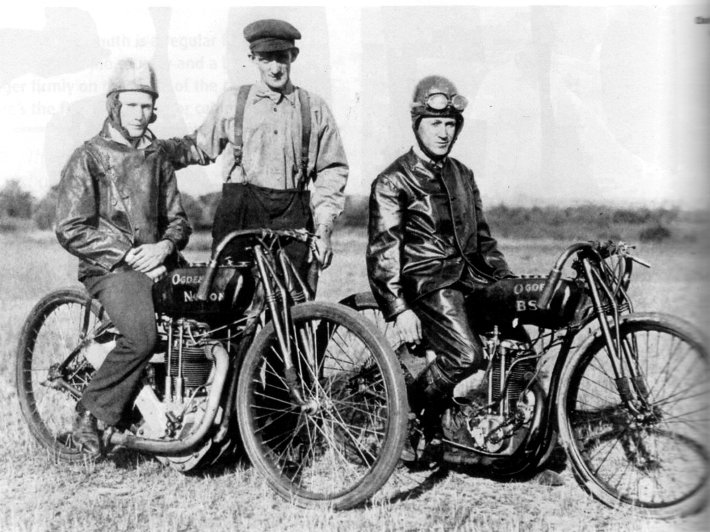 |
| |
| Ogden, Charlie Moore Park 1926.
The bikes appear to be a Norton (on the left) and a BSA.
I guess both engines are housed in Harley frames. |
| |
| |
|
| |
| |
Cunnamulla
Club Hotel |
| 1926
|
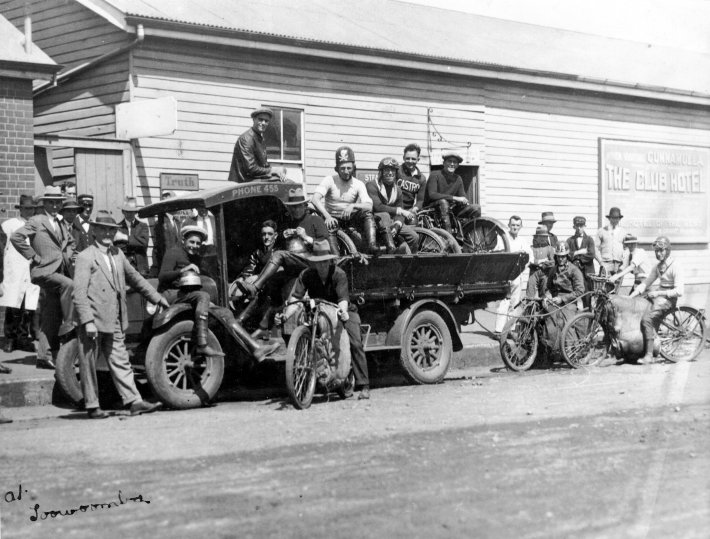 |
| |
| Interestingly the two bikes at the rear
of the truck appear to have tow ropes attached. and the
tailboard of the truck is carrying a number of bikes. Health and
Safety hadn't been invented then! |
|
|
| |
|
| |
| |
| Motorcycle Pacemaker |
| |
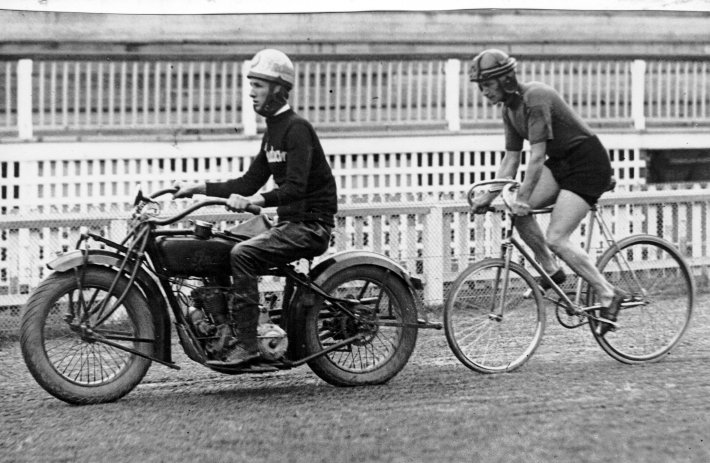 |
| |
| The Indian being used to "pace" the
cyclist. Frank Arthur and Jack King 1926
what fantastic handlebars on the pace setting motorbike.
The motorbike does not have a front brake. I believe they
were pictured on a speedway track in Queensland. The
cycle has a larger back wheel! |
| |
| |
|
| |
| |
| Frank Arthur |
| 1926 |
 |
| |
| Frank Arthur 1926. Frank is sitting on an
Indian, America's second bike maker
after Harley Davidson. The engine cylinder looks
small so maybe this bike is a 350cc, mind you it is more
likely to be a 500 if it was to be able to compete with
the rest. The skinny tyres and front forks show the
pedal bike pedigree of an early motorcycle |
| |
| |
|
| |
| |
| Deagon Track Announcers. |
| 1926
|
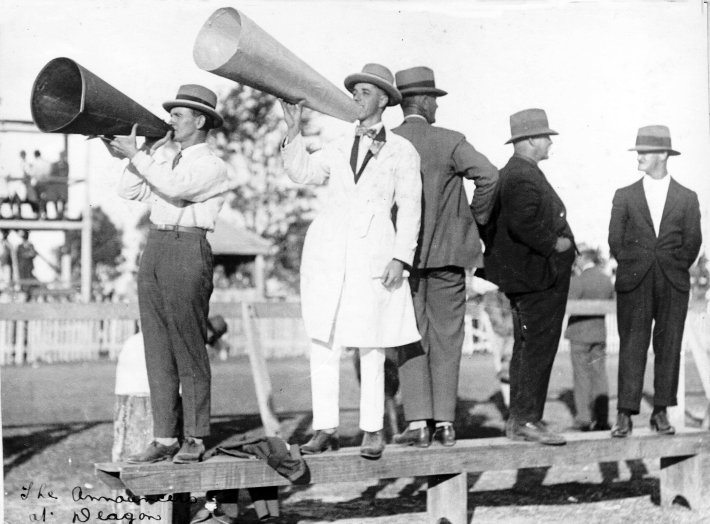 |
| |
| Deagon 1926 announcers.
It is likely that there was no electricity at most tracks
in the 1920s or maybe just no early loudspeaker systems? so
sights like this must have been commonplace. I often
fail to hear announcements now so it would have been very
difficult for me in the 1920s! I think the 3 guys in the
dark suits were spotters passing info to the "Announcers" |
| |
| |
|
| |
| |
| Frank Pearce |
| |
 |
| |
| Frank Pearce aboard A Harley Davidson
Peashooter. It was the bike to have in Australia pre UK Speedway in
1928 |
| |
| |
|
| |
| |
| Arthur Yensen |
| |
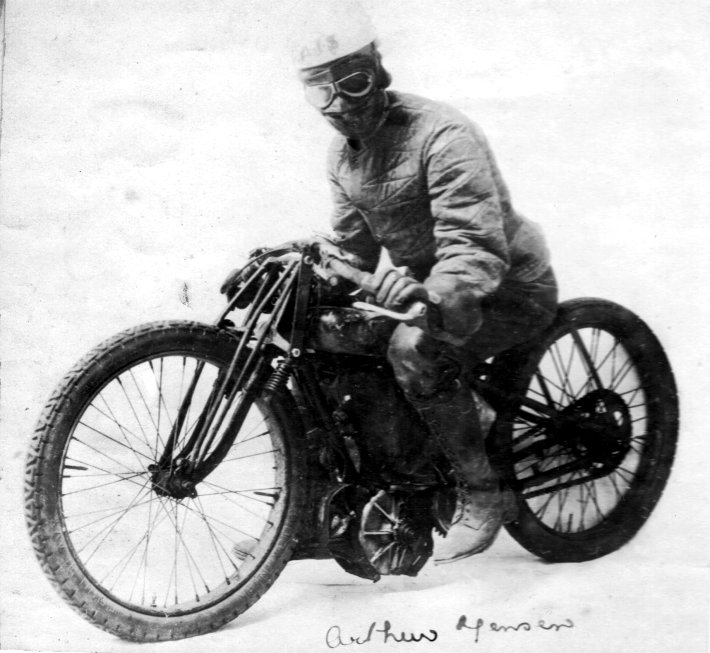 |
| |
| Tony says: Arthur Yensen was from the
North of England, he emigrated to Australia and rode in NSW before
coming to Brisbane in 1926 he rode at Davies park 1927 |
| |
| |
| |
|
| |
| |
EKKA Practice
Note
The Headlight & Horn! |
|
1926
|
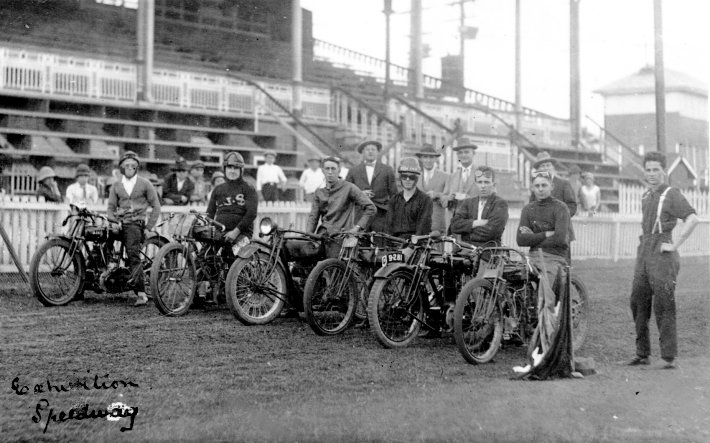 |
| |
| |
Ekka October
Opening Meeting |
|
1926
|
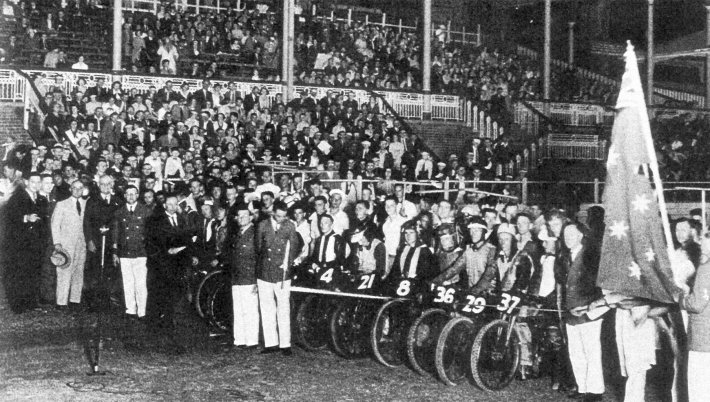 |
| |
| |
|
| |
| |
| Eagle Farm December 1926 |
| |
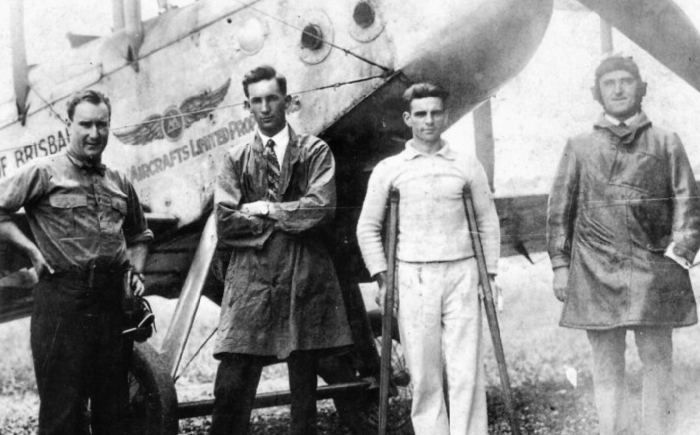 |
| |
| Eagle farm December
1926 Pilot Ron Adair, Frank Arthur, Tommy Marr and
Frank Hunting |
| |
| |
|
| |
| |
| Bluey Wilkinson |
| 1931 |
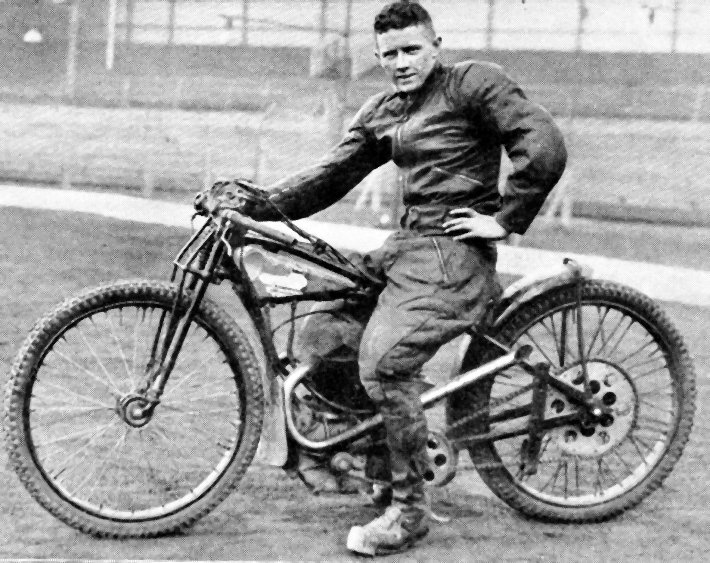 |
| |
| Bluey Wilkinson 1931 aboard a Rudge
with the distinctive upswept exhaust to avoid the track when
broadsiding around the bends |
| |
|
|
| |
| |
| Wild Bill Rodgers |
| |
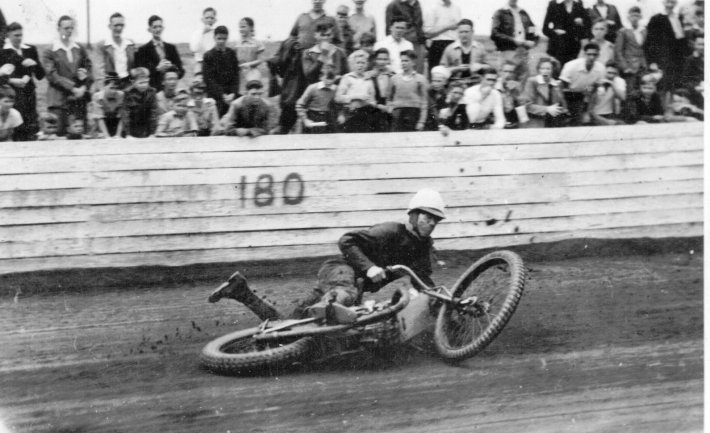 |
| |
|
Wild Bill Rodgers. The sign
behind says: 180 and Bill has turned 180 degrees on the track ! |
| |
| |
|
| |
| |
|
|
| |
| |
|
| |
| |
| Bill Fitters |
| |
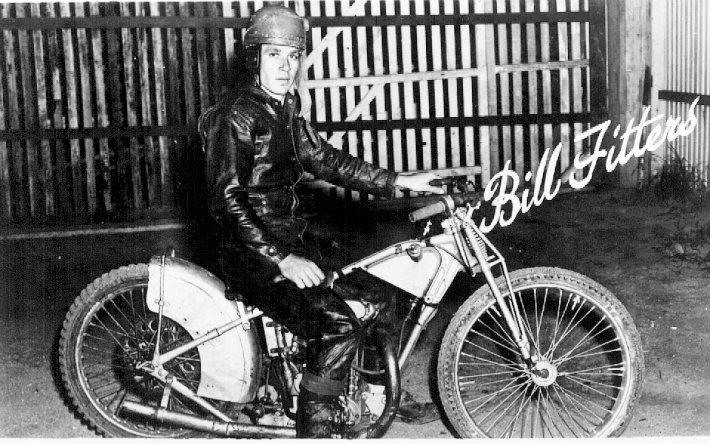 |
| |
| |
| |
|
| |
| |
Davies Park, Keith Cox
On The Bike |
| |
 |
| Photo courtesy of the Keith Cox collection |
| |
| Davies Park Keith Cox on the bike |
| |
| |
|
| |
| |
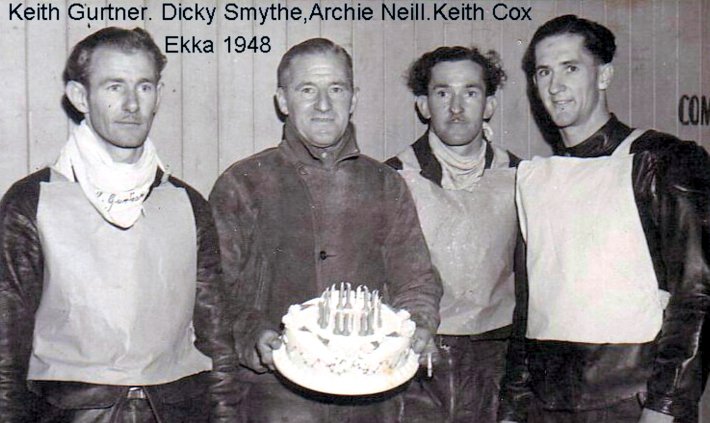 |
| |
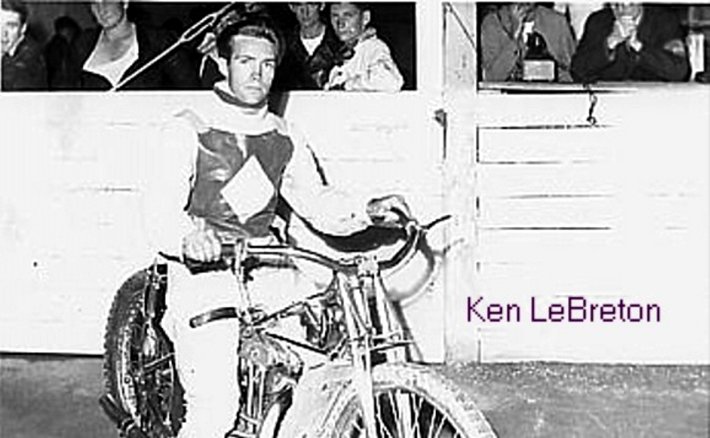 |
| |
|
Ken Le Breton who rode during
the 1940s, in the UK for Newcastle Diamonds hence the race
jacket he is wearing. Ken was killed in a track
incident in Australia
|
| |
|
| |
| |
| Keith Blicaski |
| |
 |
| |
| |
|
| |
| |
| Aub Lawson |
| |
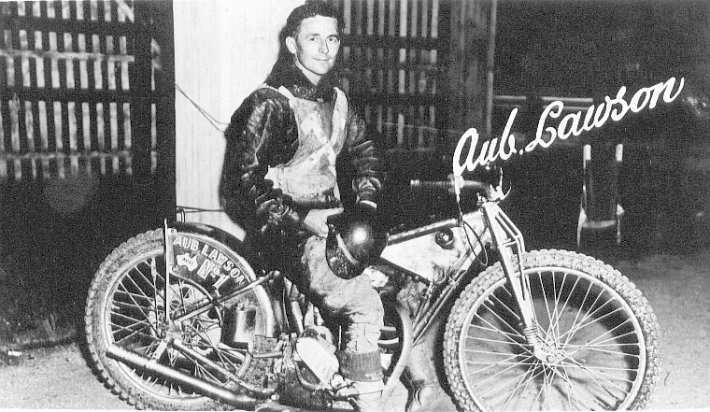 |
| |
| |
|
| |
| |
| Jack Parker |
| |
 |
| |
| |
|
| |
| |
| Alec Morrows |
| |
 |
| |
| |
|
| |
| |
Steve Langton
Speedway
Pioneer & Gold Prospector |
| |
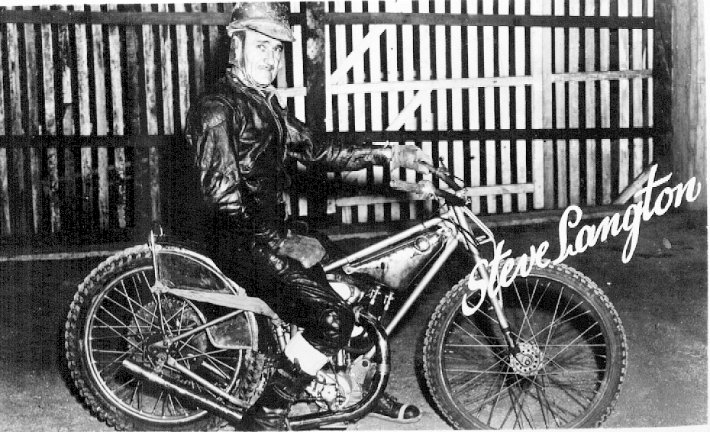 |
| |
|
Tony
Webb writes:
Steve Langton.
One of the
pioneer Australians had a long racing career from
1928 –1953.
Born in Gowrie mining camp between Oakey and
Toowoomba Queensland 3-9-1909. His father was
named as Joseph Steven, miner, and his mother
Nellie Gertrude nee Mason.
Steve first rode at Toowoomba Showground
1928/29 where he met up with Tiger Hart. He went
to UK 1930 with Tiger and raced at Portsmouth.
Joined Lea Bridge and Southampton in 1931.The
following year he moved to Clapton. Returned to
Australia with the Johnnie Hoskins Australian team
1932/33 Rode in first test [unofficial] in Perth
10/12/1932. 1 point and 7th test at the Sydney
Showground 11/3/1933 scoring 4 points. He returned
to Brisbane for remainder of the 1933 season.
Steve was reported as importing a Scott Squirrel
speedway machine to Queensland in 1931
|
| |
|
Returned to England 1934 after missing 1933 season and
joined Lea Bridge again, they were taken
over by Walthamstow mid season where he remained
until the end the season
Returned to Australia for the 1936/7 season
and rode in one test match in Sydney 12/12/1936
but failed to score. He Joined Birmingham in 1937
and 1938 seasons.
Enlisted in 2/4 Australian Armed Regiment as number
NX422650 in NSW on August 12 1941, rose to rank of
Warrant Officer Class 2 and was discharged on
December 21 1945.
|
| |
|
Returned to England in 1947 and joined Tamworth Hounds
where his old mate Tiger Hart was the team
manager; he stayed with the Hounds for 3 seasons.
Steve’s last club was Southampton Saints in 1950.
Rode a total of 11 seasons total in
England, the best year was 1949 .He had ridden in
Brisbane for the 1948/49 season winning the Vic
Huxley points score.
Selected for Australian team in Brisbane on
2/2 1952 at the age of 43 he was one of the oldest
riders in an International match. Sold his bike to
Keith Blicharski of Toowoomba and retired in 1953.
Steve raced for 9 British clubs in a 23 year
career. |
| |
|
Gold prospecting was his hobby it was said he always
carried a gold nugget which he considered to be an
insurance against hard times. The Langton/
McCafferty family ran a bus service from
Toowooomba to Gympie, on his retirement from
racing Steve set up a service station which was a
logical location for the buses. at Woombye off the
Bruce Highway north of Brisbane. His cousin George
Stephen Langton [b.22/10/1910] ran a
mechanical workshop nearby. Steve
prospected and around the Gympie area often going
bush for long periods. He always bought his
supplies at the same local store. Steve moved to
Victoria after his first wife Constance passed
away. Steve died at Gaffneys Creek Ballarat
Victoria. Another story was that Constance always
carried a port which contained all the programs
and press cuttings of Steve’s speedway events. |
| |
|
Steve had a nephew, Bonnie, son of Cousin George, who
rode at the Exhibition grounds 1950-1956. |
| |
|
Legend has that Steve’s ancestor Stephen Langton was a
signatory to the Magna Charter in 1215. As will be
noted the Christian name Stephen was carried by
the male line to the present day. A nightmare for
researchers, however Steve’s nephew Bonnie chose
to ride under his name of Bonnie therefore
breaking a tradition. |
| |
|
1930
|
Portsmouth
|
Open meets
|
|
|
|
|
1931
|
Lea Bridge
|
|
|
|
|
|
1931
|
Southampton
|
10-24-2.4
|
Southern L.
|
|
|
|
1932
|
Clapton
|
13-28-2.3
|
NL
|
|
|
|
1934-35
|
Wal/Lea B.
|
12-3
|
NL
|
|
|
|
1937
|
Nottingham
|
5-14- 2.80
|
|
|
|
|
1937
|
Birmingham
|
11-80-7.27
|
|
|
|
|
1938
|
Birmingham
|
13-102- 7.8
|
|
|
|
|
1947
|
Tamworth
|
209
|
|
|
|
|
1948
|
Tamworth
|
45-277-6-15
|
|
|
|
|
1949
|
Tamworth
|
22-227-5.95
|
|
|
|
|
1950
|
Southamptn
|
28-162-5.78
|
|
|
|
|
1932/33
|
Australia
|
England
|
2-5
|
PER. SYD
|
|
|
1936/37
|
Australia
|
England
|
1-0
|
SYD
|
|
|
1951/52
|
Australia
|
England
|
1-0
|
BNE
|
|
|
1937
|
Australia
|
England
|
1-6
|
Birmingham
|
|
|
|
|
|
|
|
|
|
|
|
|
|
|
|
|
|
|
|
|
|
|
|
|
|
|
|
|
|
|
|
|
|
|
|
|
|
| |
| |
|
| |
| |
|
Keith "Buck" Ryan |
| |
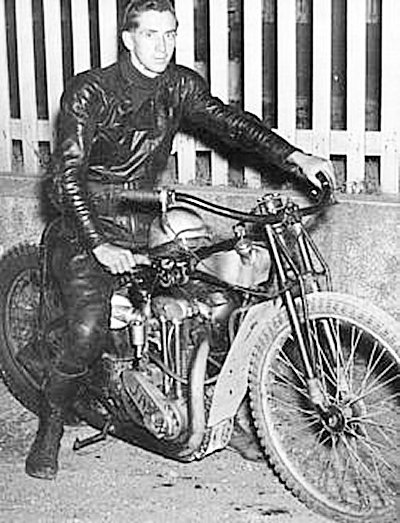 |
| |
|
Keith Buck Ryan who rode for Glasgow 1947-1949. Keith
lives in Sydney. |
| |
| |
|
| |
| |
Cyril Romaine
1947
Junior Champ |
| |
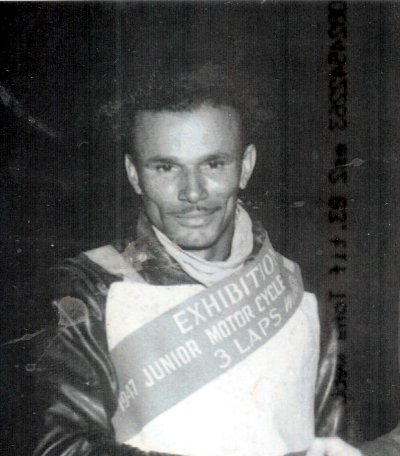 |
| |
| |
|
| |
| |
| Vic
Huxley's Trophies |
| |
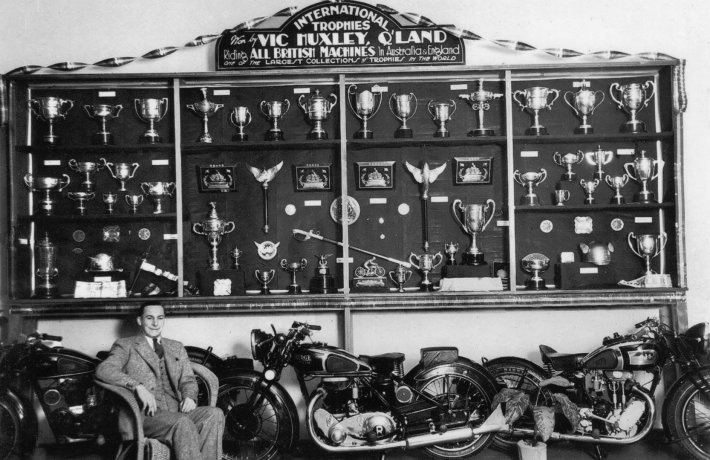 |
| |
| |
|
| |
| |
| The Hunting Brothers |
| |
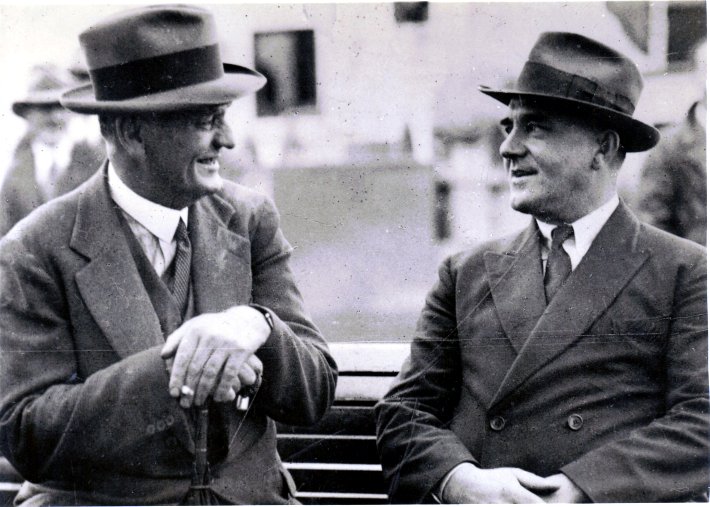 |
| |
Tony
Webb says: Australian born Albert and Frank Hunting were
the true speedway pioneers, among their achievements:-
They initiated the Golden Helmet
at Sydney August 1925. They opened tracks at Maroubra,
Oxley, Ekka, Toowoomba, Ipswich, Davies Park
during1925-1927. They started the first Speedway
magazine, The Speedway News, in 1926. Discovered/ gave first speedway
rides to: Frank Arthur, Frank Pearce, Max Grosskreutz,
Bert Spencer, Dicky Smythe, Jack Bishop, Ben Unwin, Hilary
Buchanan, Noel Johnson, Bruce McCullam, Charlie Spinks,
Vic Huxley, Dicky Case, Steve Langton, Harold Stevens,
Lionel van Praag to name a few.
They ran the first Grand Prix in
1929, Were responsible for the first
10 Australians to England in1928 They
Initiated the Speedway Coat of arms and motto. They developed speedway at seven
UK tracks, Wimbledon, Stamford Bridge, Harringay,
Birmingham, Manchester, White City, Portsmouth, three in
South America and five Australian venues. There were also
attempts at several other venues. Revived
speedway at Davies park 1931, Ekka 1937/1938. In fact AJ floated a
total of nineteen different companies. The claims of other
pioneer promoters pale into insignificance in comparison.
|
|
John Skinner says: Tony Webb is the official
Hunting family biographer. All this
information is backed with references to programmes and
company records. John says: Thank you for this insight
into the careers of these Australian Entrepaneurs.
In the UK we give credit to Johnny Hoskins as the
main man and obviously we are guilty of
overlooking the others.
|
| |
| |
|
| |
| |
| Les Todd |
| |
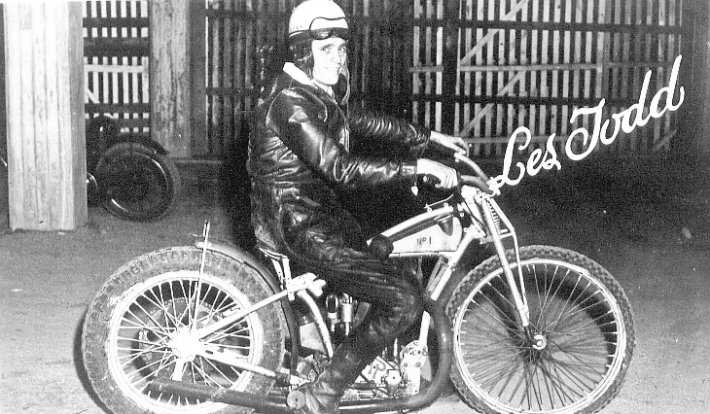 |
| |
| Les Todd aboard my favourite bike, the
JAP, younger fans would be amazed to hear 14 JAPS warming up in
the pits and the smell of Castrol R oil added to the fuel, did so
much to add to the atmosphere of a speedway meeting. |
| |
| |
|
| |
| |
| Ray Todd |
| |
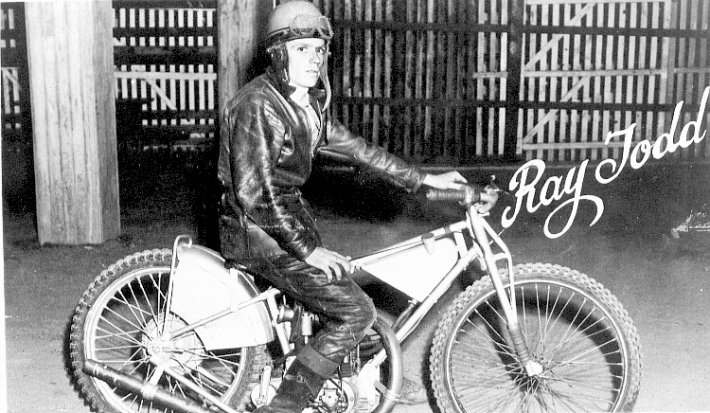 |
| |
| Were Ray and Les Todd brothers? |
| |
| |
|
| |
| |
|
Keith Cox
An Original
Edinburgh
Monarch |
| |
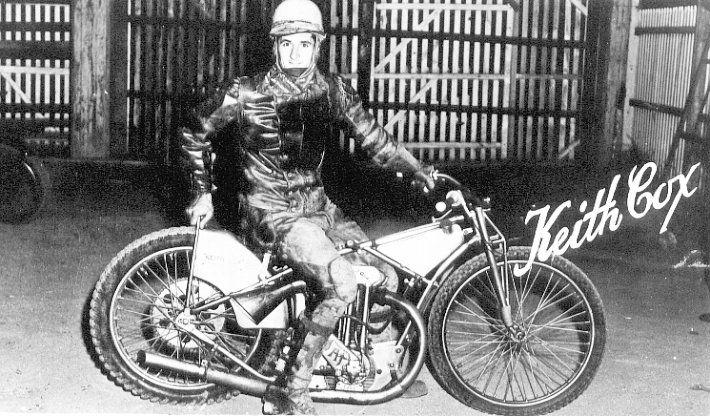 |
| |
|
Tony Webb writes: -Keith Cox was a member of the
original Edinburgh team of 1948. One question often asked
by Monarchs fans, and which I put to Keith before
he passed away last year,
“why did you not return after such a promising
debut year “? The answer was quite simple he had a wife and
family in Brisbane to consider , he was then offered
a good job with the PMG when he returned to home in
late 1948, it was too good to pass up. He stayed with the
department for 33 years. The offers from British speedway
promoters still came in for several years but the
temptation was resisted. He was able to work full time,
ride interstate when the chances came, go fishing and
enjoy his speedway and most of all his family. It was an
ideal lifestyle.
Keith rode with the famous Ulysses motor cycle
club of which was is a past President. His memories
Meadowbank remained over the years, he recalled the warmth
and hospitality of the folk in Scotland and his promoter
Ian Hoskins and Frank Varey. He was originally earmarked
for the Newcastle team, but instead joined the Monarchs
where he had his first outing on April 24 1948. He
remembered a workshop he shared under the Meadowbank
stadium with Clem Mitchell and his team partners Dick
Campbell, Dennis Parker, Eddie Lack. Bill Baird, Bill
Maddern and Danny Lee. Keith had a good mechanical
background from his mentor the former Sheffield star Andy
Menzies. He proved to be a good team man scoring several
bonus points. He rated Sheffield as being his favorite
away track and recalled his amazment at his first sighting
of the tiny Bristol circuit of 260 yards. In that first
season he rode 24 league meetings scoring 52 points. His
highlights were a second place in a Best pairs meeting at
Edinburgh with his lifelong mate Keith Gurtner, a guest
booking at the famous Wembley stadium and a
personal best of 8 points from three rides in the
Edinburgh win over Middlesboro in May 1948 when he capped
a memorable night by winning the scratch final. His final
UK meeting was at Fleetwood in October. His courage and
determination was confirmed when he attempted an outside
pass on wild man ‘Farmer’ Alec Grant, however what Keith
did not know that ‘Farmer’ was blind in the right eye and
that outside passes were not recommended and definitely
not on his home track at Newcastle.
Keith was born in
Pomano in Queensland in 1923, began speedway in Brisbane
in 1946. As an all round motorcyclist he competed in
several motorcycle sports throughout his career.
In Brisbane the
exploits of the two Keiths,
Gurtner and Cox are
legendary speedway folklore, close friends off
track, they even had adjoining homes on the fishing
paradise of Moreton Island,
but they were deadly rivals once the tapes rose.
Keith retired in 1958. He represented Australia in 5
official test matches with an average that puts him second
in the all time list of Australian test riders.
Although credited with only one Queensland state
championship against arch rival Gurtie’s 7 he is quick to
point out that Gurtie won 5 of those after he [Keith]
retired!! Keith returned to the track in
Brisbane on his 70 th birthday aboard a Godden to
set a time of 19 seconds, which was only 2 seconds below
his times when he was at his peak.
Keith shared a passion with many Queenslanders
for a greater recognition of Queensland’s role in world
speedway history which we hope will be addressed in time. It was both an honour and a privilege to share
some of speedways past with a speedway legend.
Rest in peace Keith
|
|
| |
| |
|
| |
| |
| Dickie Smythe |
| |
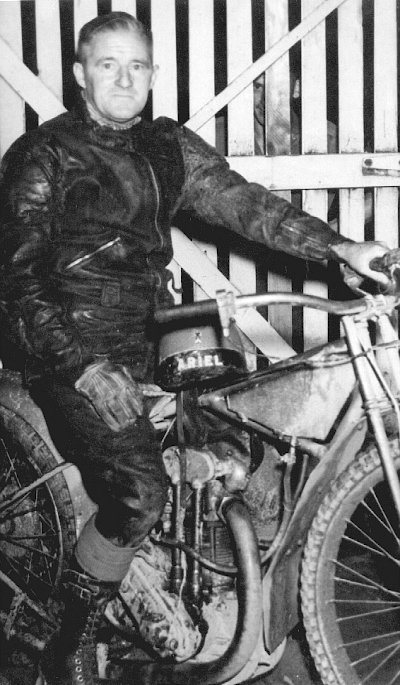 |
| |
| Dickie Smythe on a JAP so why
does his helmet say Ariel, Ariel was another British bike
company maybe he had an Ariel too? |
| |
| |
|
Flying Dick Smythe
|
| |
|
Tony Webb writes: Ekka favourite Dick Smythe was one of
the original Queenslanders to travel to England
in 1928,
twenty years later he was still thrilling
the crowds in Brisbane recording his best ever
Test score in 1947/1948 season.
|
| |
|
Dick was born at
Ashgrove in Brisbane’s West on 17/8/1907. The
chief interest during his boyhood was not
motorcycles, but horses, it was his firm intention
to be a professional jockey. He was related to the
famous Epsom trainer Victor Smythe
Dick was an excellent horseman,
his lightness coupled with unusual strength
for his weight, would have stood him in good stead
to be a jockey. His family were not in favour and
it was into the family garage business he was
guided. However the Smythe garage was used by all
the speedway riders around Brisbane to tune and
service their machines, therefore it was not long
before the young Dick was looking to a career on
the cinders. |
| |
|
By the time AJ Hunting had opened the Ekka in 1926 Dick
had an AJS and along with his pal Vic Huxley he
was ready to go. When speedway moved to the Davies
Park track after a year, Dick was really showing
some great form. He signed for International
Speedways Ltd.
and travelled to England with AJ Huntings
party on the S.S.Oransay in March 1928. |
| |
|
By the time AJ Hunting had opened the Ekka in 1926 Dick
had an AJS and along with his pal Vic Huxley he
was ready to go. When speedway moved to the Davies
Park track after a year, Dick was really showing
some great form. He signed for International
Speedways Ltd.
and travelled to England with AJ Huntings
party on the S.S.Oransay in March 1928. |
| |
|
Dick rode at the first ever meeting at White City on
May 19, the next month he broke Frank Arthur’s one
lap record at the White City track, going on to
claim the same record at Wimbledon and Kings Oak.
By this time he was racing a Douglas machine
instead of his old AJS, he returned to Brisbane to
race where he remained until March 1931, during
that period he also raced his fathers trotting
horses as well as speedway. |
| |
|
In 1931 with his wife and brother as mechanic he
boarded the S.S. Morreton Bay to return to England
for a second season. He signed for Stamford Bridge
remaining there until the end of 1932. He
represented Australia twice in 1931 and every
match of the five meeting series in 1932, the last
match at Wembley drew a 70,000
attendance..Travelling back to Australia in the
end of 1932 Dick rode in the Test matches at
Claremont Perth, Adelaide, Melbourne and Sydney
before reaching his home town. |
| |
|
Missing out the English 1933 season, his third voyage
in 1935 saw him link up with the famous Wembley
Lions, which was following by two years with the
Harringay Racers, throughout his overseas career
he was based with London clubs. The last two
seasons saw him gain another two Australia caps at
West Ham in 1936 and Southampton in 1937. |
| |
|
Returning to Australia he rode for Frank Arthur at the
Sydney Royale, and at the Ekka meetings which were
few and far between up till the out break of World
War Two. |
| |
|
When speedway resumed in 1947 Dick was once more in
action winning the coveted golden helmet and
gaining selection for two matches in the 1947/1948
test matches. He scored his best ever tally of 12
points in the home team victory of 57-47 in
Brisbane December 6. His final test appearance was
1949 series, finally hanging up his leathers in
1951 |
| |
|
Dick worked for
Australia Post after his retirement from racing in
1953 residing at Normanby, Brisbane. Away from
racing his hobbies were reported as keeping
goldfish and birds. He passed away suddenly in
Brisbane 27/2/1967.age 59 leaving a wife and a
daughter.
He also left a lot of memories, as a one
who thrilled his fans for many seasons and is a
true pioneer of speedway. |
| |
| |
|
| |
| |
Sig Schlam
At Claremont |
| 1929
|
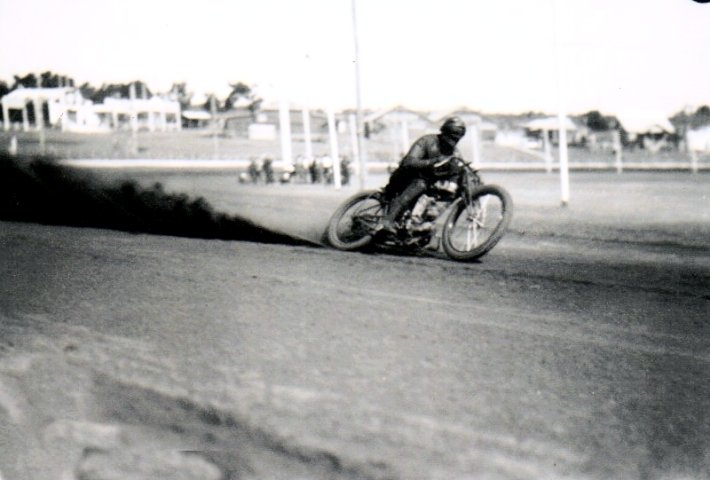 |
| |
| Sig Schlam at Claremont 1929.
I have seen his forename spelt Cig. What a great photo,
whether his name is sig or cig. The plume of dirt
kicked up from the back wheel is amazing and is probably
why modern bikes have dirt deflectors! |
| |
| |
|
| |
| |
| The Waddells |
| |
| Jack Waddell |
| |
 |
| |
| |
| Bonnie Waddell |
| |
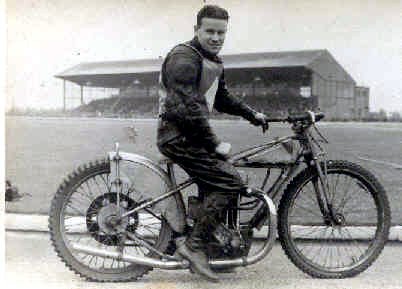 |
| |
| Bonnie Waddell the Newcastle
Diamond at Brough Park |
| |
| |
| Jack & Bonnie Waddell |
| |
|
Jack and his brother Bonnie were two riders who
played a great part in the establishment of speedway in
Queensland in the post war period. The early programs
spelt the surname Wardell and later it was changed to
Waddell. They both started riding in the 1938/39 season at
the Exhibition ground under A J Hunting. Originally from
Toowoomba ,a town that produced many great speedway
riders, the brothers rode until the mid 1950s. Bonnie went
to UK in 1947 where he raced for three seasons and Jack
spent most of his racing days in Queensland and New
Zealand where he was a member of an Australian test team
who toured New Zealand in 1949 scoring 6 points in the
three match series |
| |
|
Jack Waddell commenced riding in the
1938/39 at Brisbane Exhibition ground he was an all round
sportsman playing rugby league for Toowoomba on Sundays
after racing at the EKKA the night before. Jack also rode
in TT events at Kingston, Strathpine and Bardon with Keith
Cox and the Braund brothers. In a tragic night at the Ekka
on the first of May 1953 he received severe concussion
when he was flung into the safety fence. Earlier in the
evening Speedcar driver Curly Rylands of Maryborough lost
his life when he was thrown from his car. Jack made a full
recovery and achieved one of his career highlights the
next season when he took out the 1954 Queensland Best
pairs with Keith Cox Retirement came at the end of the
1958/1959 season on May 23 to be exact
Jack passed away in February 2003 |
| |
|
Bonnie Waddell’s career followed a similar
pattern to his brother Jack for the first season in 1946.
Bonnie was also from Toowoomba, born in 1922, a motor
mechanic by trade during the early part of 1947 he rode in
Sydney with Keith Cox but had limited success. He was
spotted by pioneer Brisbane rider Charlie Spinks who was
contracted to the English Second Division team Newcastle
Diamonds. Charlie signed Bonnie up for the legendary
promoter Johnnie S Hoskins who was the boss man at the
Newcastle track. Late in the 1946 season Bonnie had been a
Telegraph Blue, a prestigious award by the popular
Brisbane newspaper for services to motorcycling. Not only
was Bonnie a very good motorcyclist and mechanic, he was
also very dedicated to personal fitness and was active in
many sports. Bonnie left Sydney in March 1947 aboard the
Asturios, a former troop carrier, it was not first class
travel, but in the company of Bat Byrnes, Ken le Breton,
Keth Buck Ryan, Junior Bainbridge, Arthur Payne, Bill
Harris, Mal Hodgson, Jack Baxter and Reg Challenger a
great time was had by all. On arrival at Tilbury, Bonnie
straightaway made the long journey up to the north east of
England to join his team the Diamonds. Within 24 hours of
arrival he was on the track for the match against Wigan
Warriors, this was the 28th of April. In his
first ride he finished last, then a third and finally an
engine failure put paid to his debut. As he was on the
track spare it was a creditable start |
| |
|
Mounted on his own machine he scored 4 at the
tiny Bristol track the following week and then 2 at
Birmingham the next evening.
He went on to ride 26 meetings for the Diamonds
in that first season; racing on 8 different tracks the
length and breadth of England. His final score was 65
points and 12 bonus points, which are paid when you follow
your partner home in 2nd or 3rd position.
|
| |
|
The best meeting Bonnie had was a 7 paid 8 at
home to Norwich stars who included fellow Queenslander
Bert Spencer in their team Bonnies team mates for the
season included the veteran Australian Doug McLachlan and
the White Ghost Ken le Breton. After the long voyage home
on the Strathden to Sydney and then by train to Brisbane,
Bonnie commenced the 1947/48 Brisbane season. He
represented Queensland in the match against an overseas
select on November 22 scoring 3 in a Queensland’s lowly 13
against a rampant overseas team 33. He was called up for
the Test against England at the Ekka on December 6 scoring
3 points in the Australian 57-47 defeat of the Lions |
| |
|
Returning to England in April 1948 he was
dismayed that his Newcastle promoter Johnny Hoskins had
transferred him to Exeter in exchange for fellow
Queenslander Keith Gurtner. Worse was to come as Exeter
could not give him a team place. He was then loaned to
West Country rivals the Plymouth Devils in the third
division under Jimmy Baxters helm. Jimmy was to feature
later in the year. On his debut at Pennycross he scored a
handy 4 paid 6. |
| |
|
Team mates in that 1948 side included Pete
Lansdale, grass tracker Ivan Kessel and fellow Brisbane
based rider and frame maker Dave Hynes. A Speedway News
report in May 1948 stated Bonnie had acquired one of the
new Hynes speedway frames |
| |
|
In the next few months Bonnie rode at several
tracks that were new to him, including Yarmouth, Wombell,
Hastings, Tamworth, Hull and Cradley Heath. In July injury
hit Exeter recalled him to the County ground. After two
meetings for the Falcons drama struck when he turned up at
Jimmy Baxters other track Southampton to ride for Exeter. |
| |
|
A heated exchange took place between Bonnie and
Jimmy with the result that Bonnie loaded his bike and left
the stadium. Press reports of the day state that he was
paid not to ride and the matter was reported to the
speedway control board. Reconciliation must have taken
place as two days later he was back at the Southampton
track once again in the Plymouth team. Then he scored a
valuable 4 points for the Devils. Bonnie rode in all the
Devil’s fixtures up to the season’s end on October 28.
This was his best season with a total of 45 meetings. |
| |
|
Bonnie braved the British winter of 1948,
working as a motor mechanic. He was prepared and ready for
the tapes to go up on his third season in UK. He was back
in Plymouth for the meeting of April 1st against Exeter.
The team included George Wall, Alan Smith and Pete
Robinson. Niggling injuries were too playing havoc with
this last season in England and after 21 meetings he
appeared no more in the Plymouth colours following the
match at Tamworth on July 27. Prior to this he had only
scored 1 point in his last 4 meetings. |
| |
|
There are reports that he won a Grasstrack
championship after he finished at Plymouth but I have
found no official confirmation of that. There are also
reports that he rode at Long Eaton but as the Archers only
held un-official meetings,
again no evidence. |
| |
|
Back home again, his motorcycle business in Ann
Street, Fortitude Valley became his primary interest, but
he still continued to ride at the Ekka until 1956/57
season |
| |
|
In 1949 both Bonnie and Jack were members of a
Queensland team that travelled to New South Wales for a
series of matches. On
October 28 they met a Royale team
losing 10-38, Bonnie scoring 4 Jack 3. The next
meeting at Parramatta resulted in a draw. The final match
back at the Royale on November 4 the Queenslanders met a
NSW side losing 13-35. Bonnie scored 1 Jack 2. |
| |
|
Bonnie received a cap for the Australian team at
the Ekka on February 2 1952 when he contributed 3 points
in the Australian side’s 66-41 victory over the Lions.
In 1953 he was centre of a Speedway riders
strike for better pay, in his role as secretary of the
Speedway Riders Group. This disrupted the 1953/54 season
in Brisbane. |
| |
|
Bonnie is considered by some Exhibition ground
observers as a very shrewd rider who would play the
handicappers at their own game. He was careful, when his
handicap was reduced not to take too much advantage with
improved performances straightaway which would see him
moved back again.
He had the system worked out so at the end of the
season his total points score was up with the best with
the minimum of risk. Had he persevered in England he would
possibly have emulated the careers of other great
Queensland riders.
Bonnie is believed to have passed away in the late
1980’s |
| |
|
Bonnie Waddell
|
|
|
|
|
|
1947
|
Newcastle
|
Division 2
|
26-65+12bp
|
|
|
1948
|
Plymouth
|
|
43-124+24
|
|
|
1948
|
Exeter
|
Division 3
|
3-1
|
|
|
1949
|
Plymouth
|
|
25-39+ 5 bp
|
|
|
1951/52
|
Australia
|
England
|
1-3
|
Brisbane
|
|
1946
|
Queensland
|
Title
|
3rd
|
Brisbane
|
|
|
|
|
|
|
|
|
|
|
|
|
|
Jack Waddell
|
|
|
|
|
|
1949
|
Australia
|
N Z
|
3-6pts
|
In N Z
|
|
1953/54
|
Queensland
|
Best pairs
|
1st
|
Keith Cox
|
|
1952/53
|
Queensland
|
Best pairs
|
3rd
|
C. Watson
|
|
|
|
|
|
|
|
| |
| |
|
| |
| |
| Bill Jemison |
| 1949 |
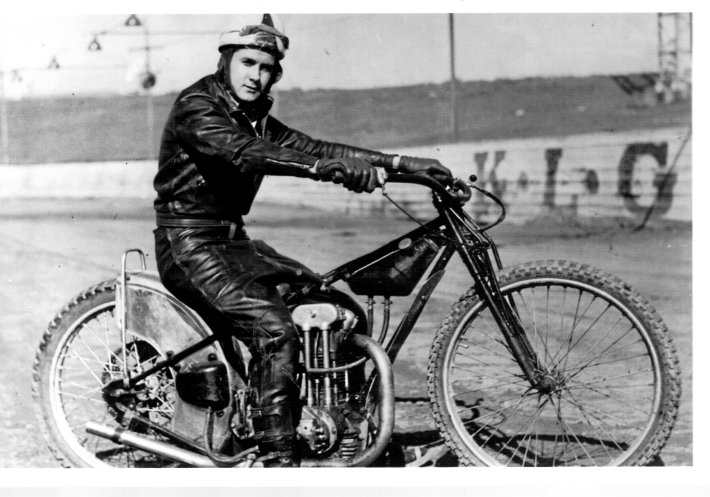 |
| |
| |
|
| |
| |
| Charlie Datson |
| |
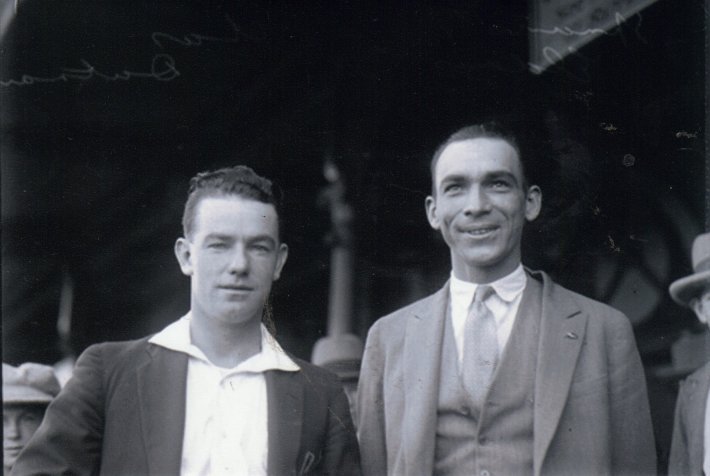 |
| |
| |
|
| |
| |
Geordie Farmer
Alec Grant |
| |
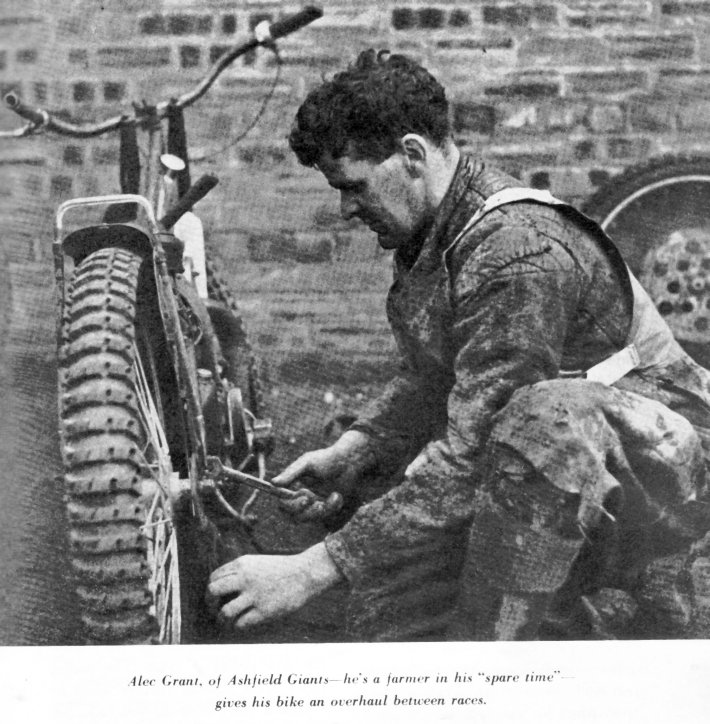 |
| |
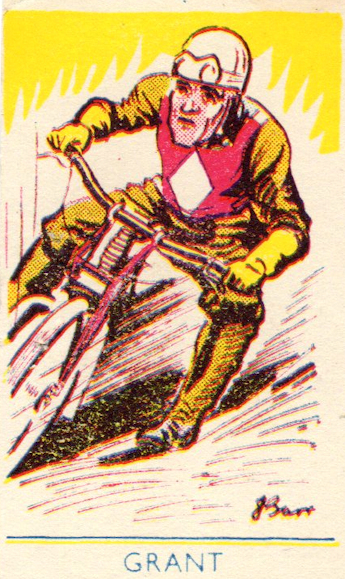
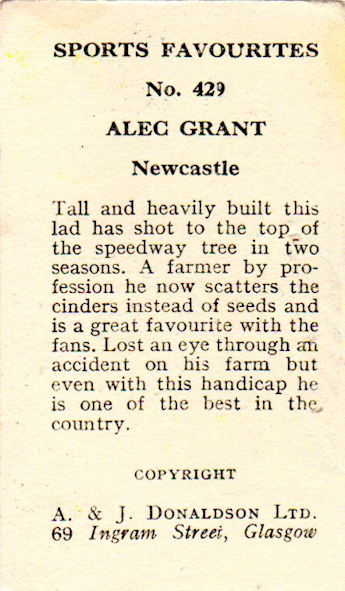 |
| |
| |
|
| |
| |
| Kevin Torpie |
| |
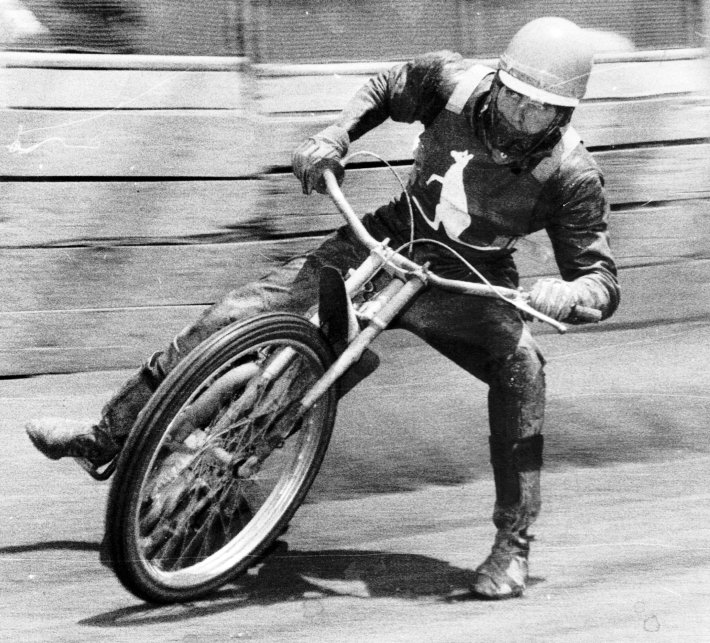 |
| |
| Kevin Torpie |
| |
| |
|
| |
| |
|
John says: I asked Tony about the bikes used in Australia prior to
Douglas and Rudge taking over.
|
|
|
|
Tony
Webb says: Prior to the Douglas the AJS, Indian, Velocette, were
all used around 1928. I am just looking at a 1926 programme the
AJS was the most popular.
I have a book the A-Z of speedway
bikes with details of over 80 bikes, I can supply photos of
any make you need.
|
| |
| John says: I think we would all be interested to hear
about the older bikes used on the 1920s dirt tracks. So
Tony if you can tell us what bikes the Aussie pioneers were
using please get in touch. |
| |
| |
| |
|
| The contents of the site are © and should not be
reproduced elsewhere for financial gain. The contributors to this site
gave the pictures and information on that understanding. If anyone has
any issue or objections to any items on the site please
e-mail
and I will amend or remove the item. Where possible credit
has been given to the owner of each item. |
|
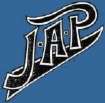
 |


